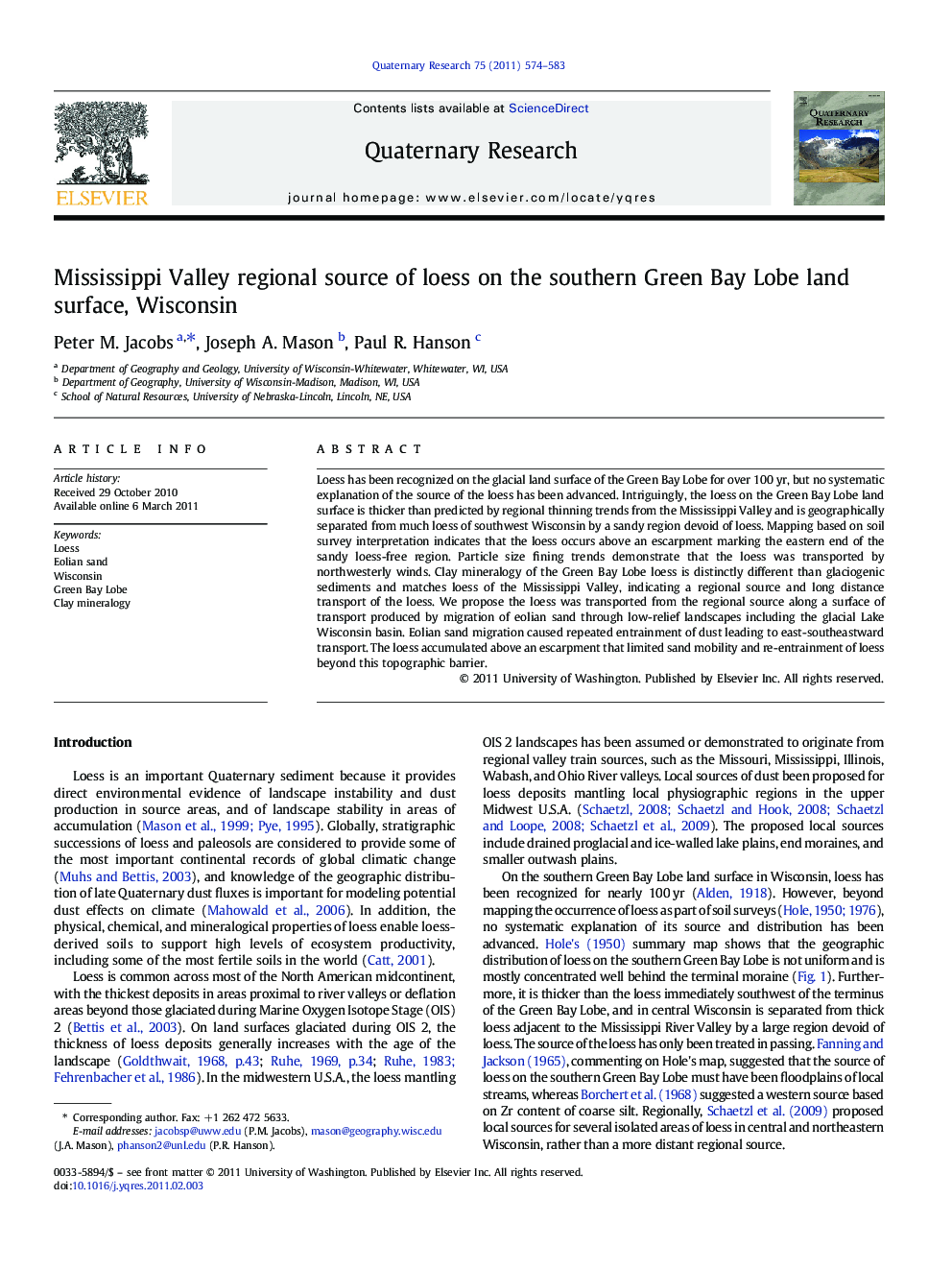| Article ID | Journal | Published Year | Pages | File Type |
|---|---|---|---|---|
| 1045829 | Quaternary Research | 2011 | 10 Pages |
Loess has been recognized on the glacial land surface of the Green Bay Lobe for over 100 yr, but no systematic explanation of the source of the loess has been advanced. Intriguingly, the loess on the Green Bay Lobe land surface is thicker than predicted by regional thinning trends from the Mississippi Valley and is geographically separated from much loess of southwest Wisconsin by a sandy region devoid of loess. Mapping based on soil survey interpretation indicates that the loess occurs above an escarpment marking the eastern end of the sandy loess-free region. Particle size fining trends demonstrate that the loess was transported by northwesterly winds. Clay mineralogy of the Green Bay Lobe loess is distinctly different than glaciogenic sediments and matches loess of the Mississippi Valley, indicating a regional source and long distance transport of the loess. We propose the loess was transported from the regional source along a surface of transport produced by migration of eolian sand through low-relief landscapes including the glacial Lake Wisconsin basin. Eolian sand migration caused repeated entrainment of dust leading to east-southeastward transport. The loess accumulated above an escarpment that limited sand mobility and re-entrainment of loess beyond this topographic barrier.
